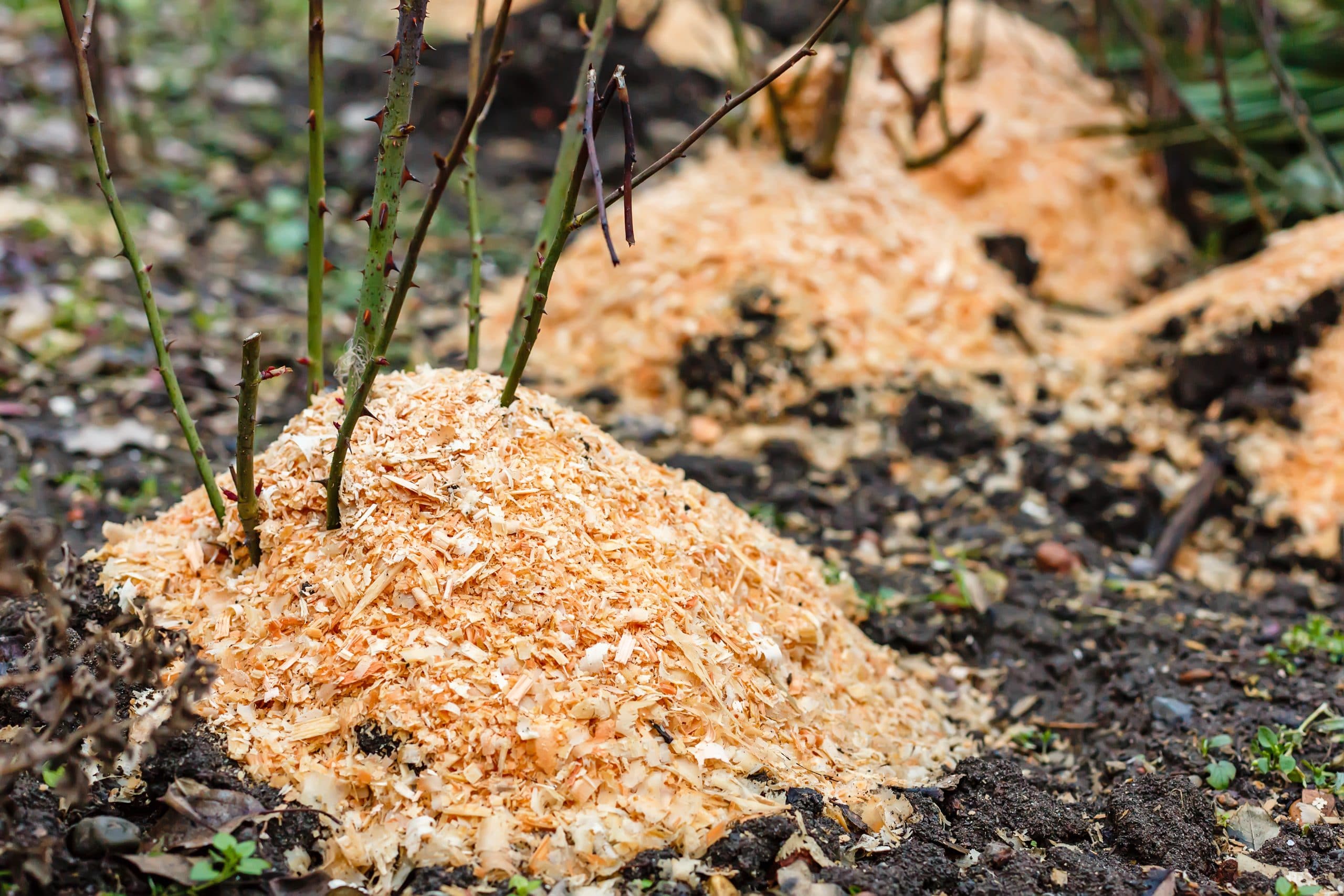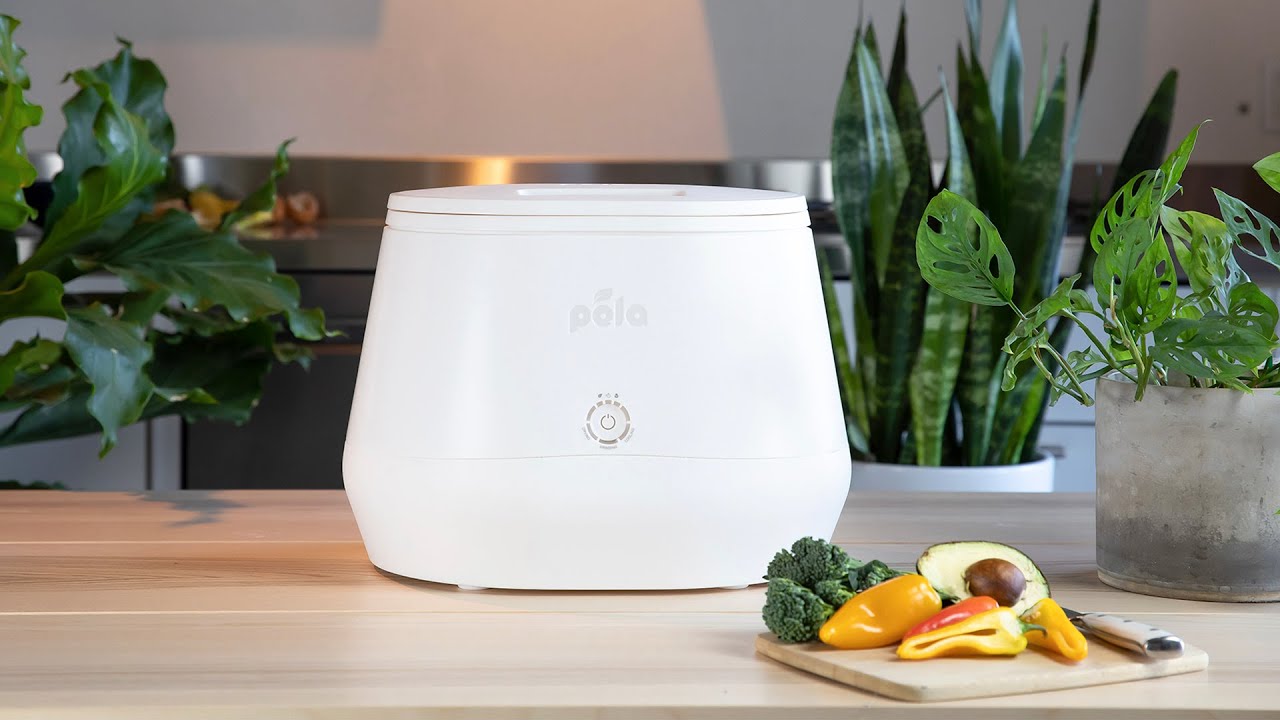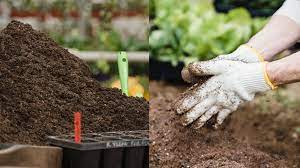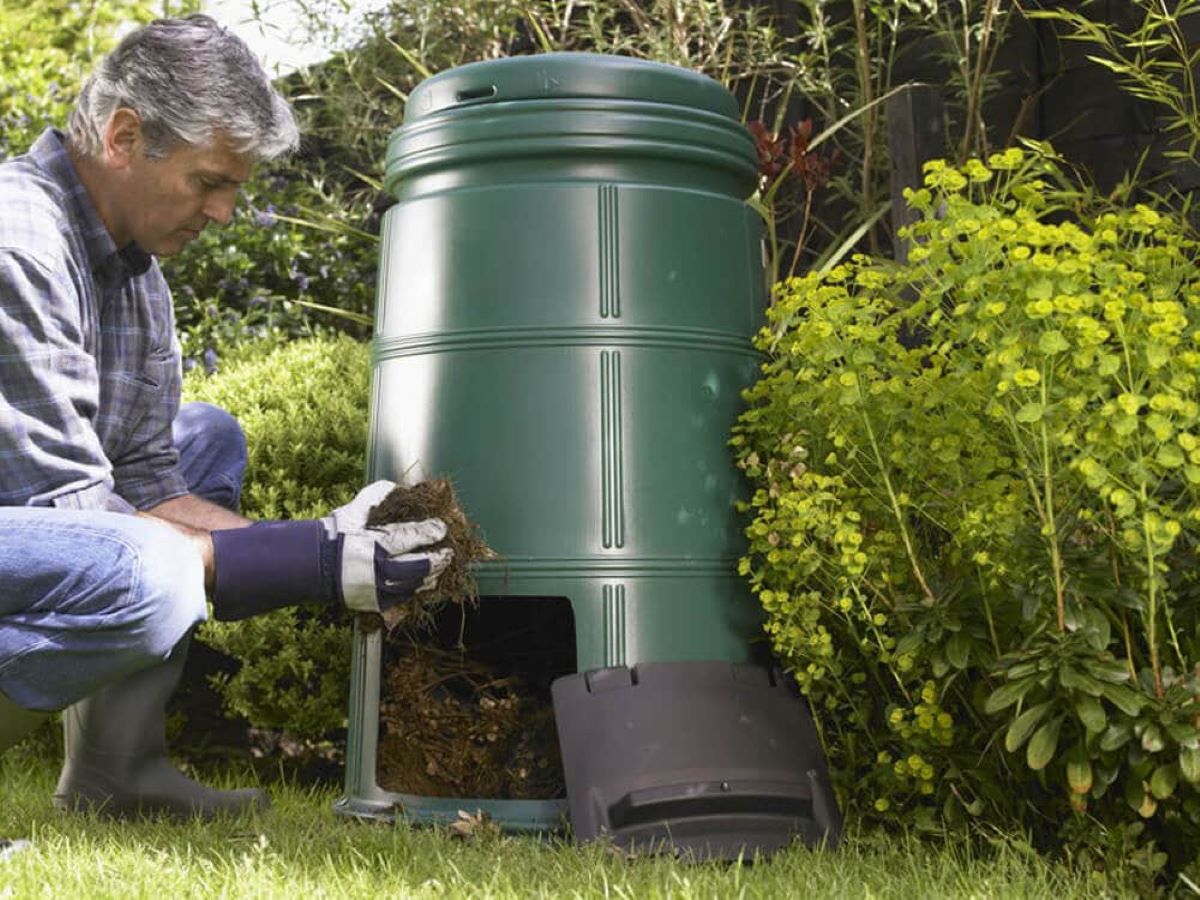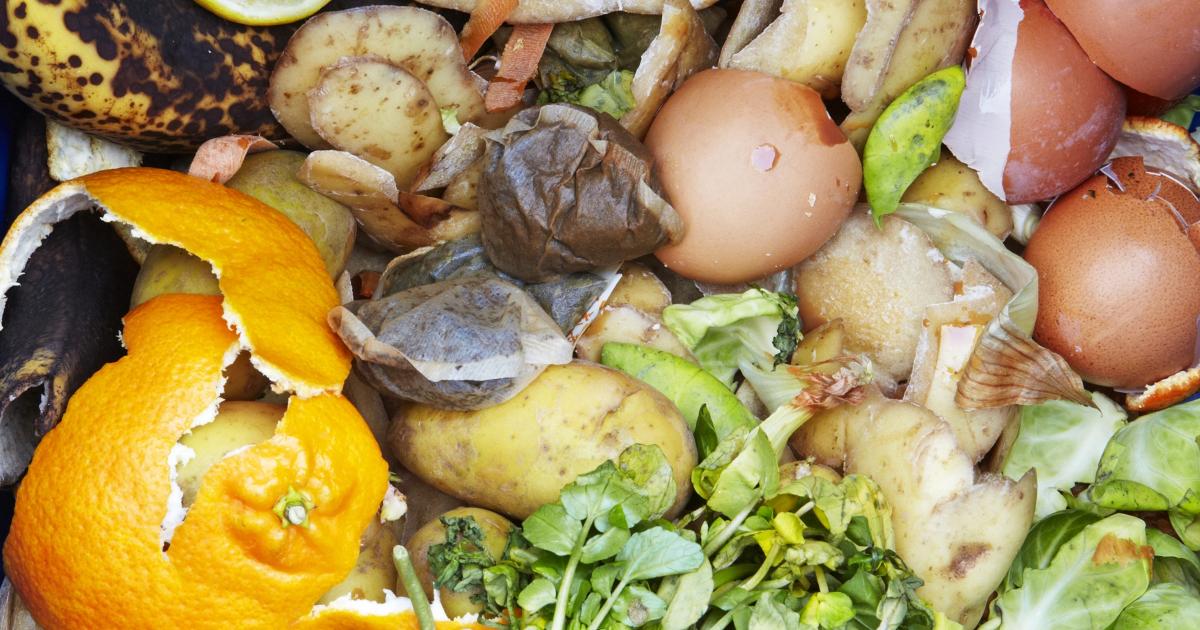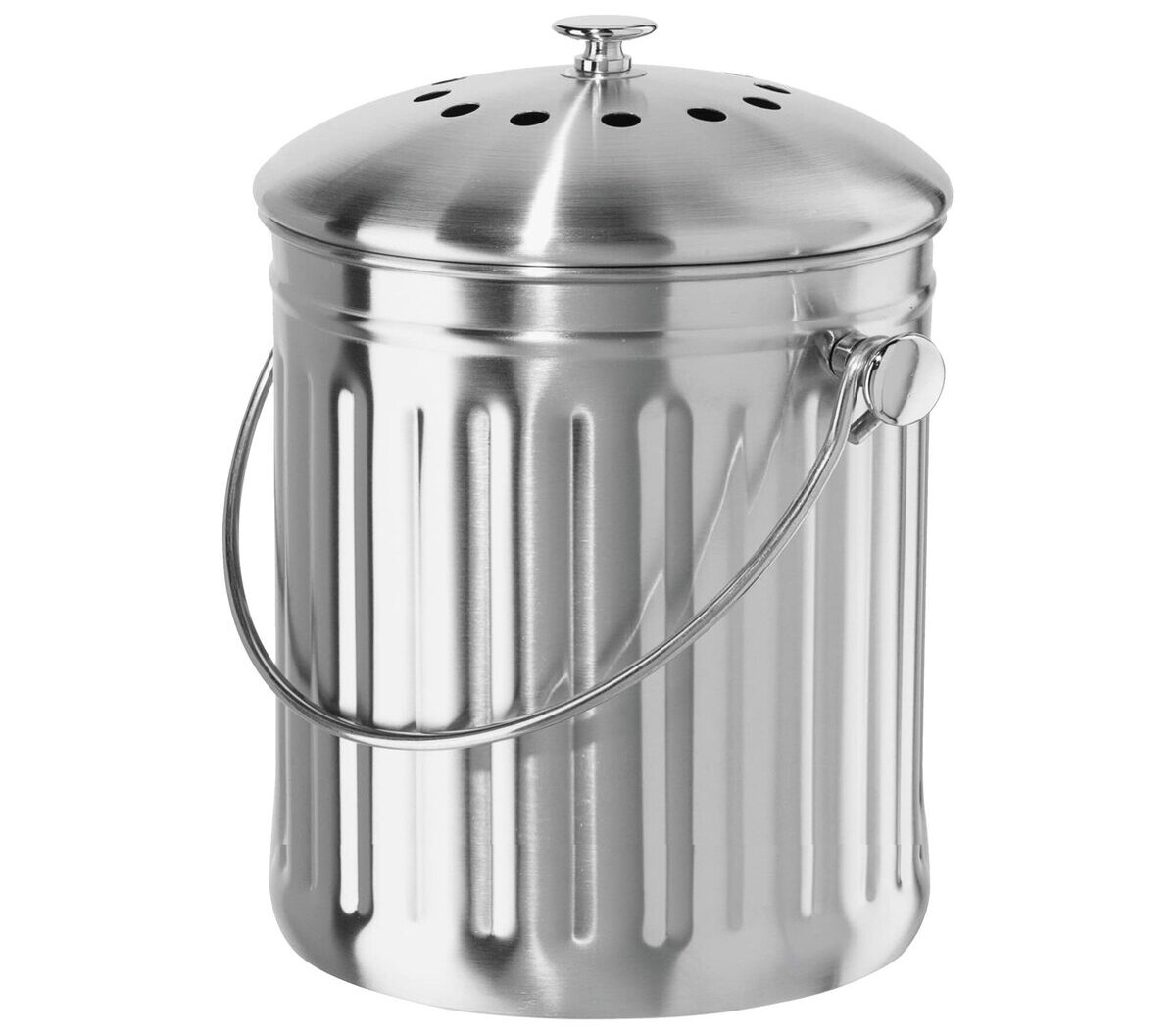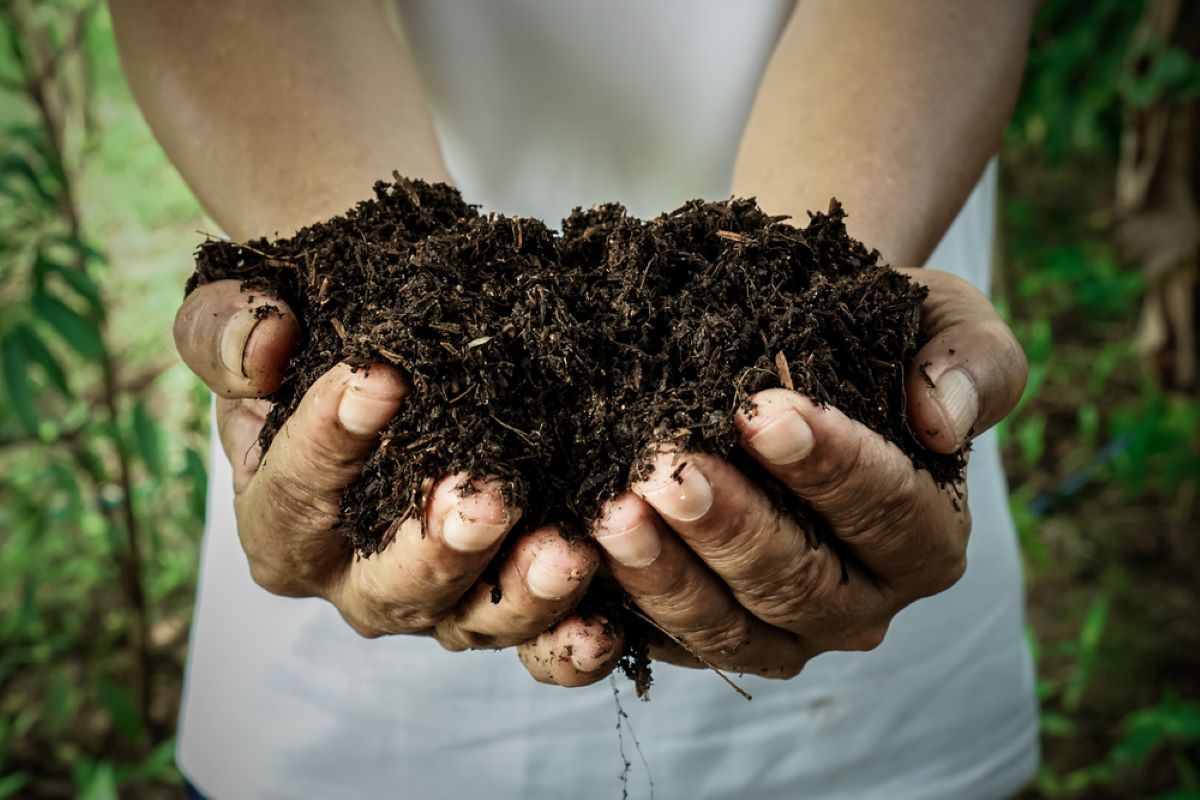Home>Gardening Tips and Tricks>Eco-Friendly Gardening>How Hot Can A Compost Pile Get
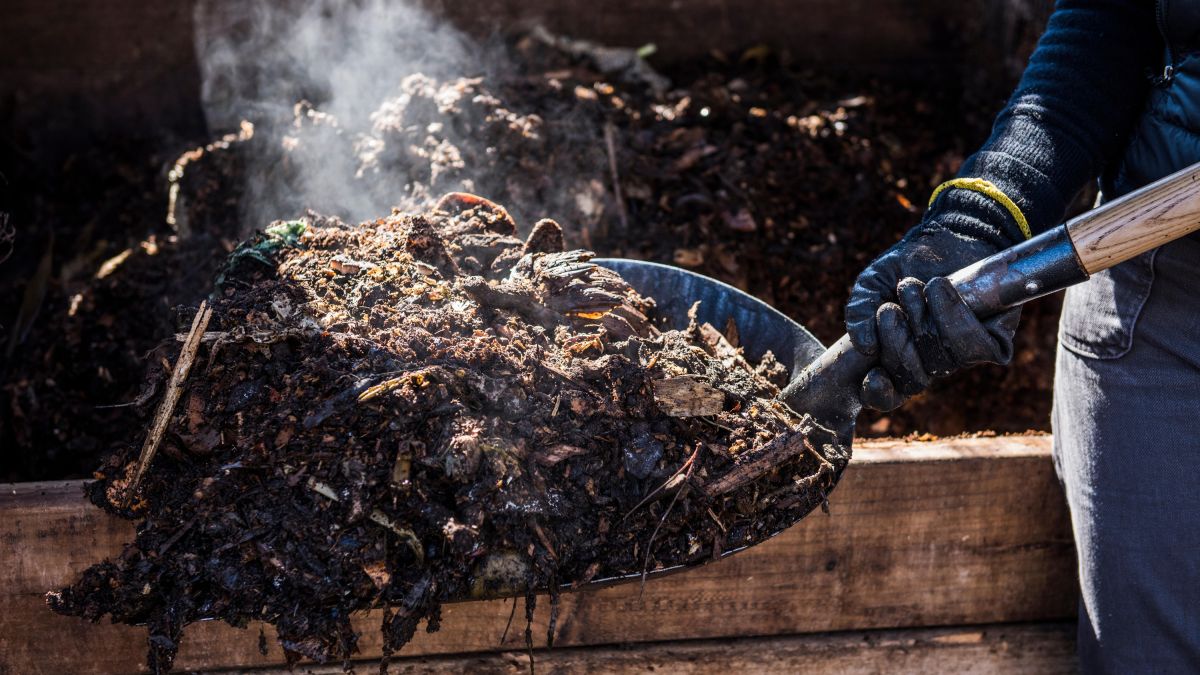

Eco-Friendly Gardening
How Hot Can A Compost Pile Get
Modified: February 9, 2024
Learn how eco-friendly gardening can generate high temperatures in a compost pile, creating optimal conditions for organic matter decomposition. Discover the benefits and tips for managing heat in your compost pile.
(Many of the links in this article redirect to a specific reviewed product. Your purchase of these products through affiliate links helps to generate commission for Chicagolandgardening.com, at no extra cost. Learn more)
Table of Contents
Introduction
Composting is an eco-friendly gardening practice that allows us to transform organic waste into nutrient-rich soil amendments. Not only does composting help in reducing landfill waste, but it also helps in improving soil health and promoting sustainable gardening practices. One of the key factors that play a significant role in the composting process is temperature.
Compost piles, when properly managed, can generate heat as a result of the decomposition process. This heat is produced by the activity of microorganisms breaking down the organic materials in the pile. Understanding how hot a compost pile can get and maintaining optimal temperature levels is crucial for successful composting.
In this article, we will explore the factors that influence compost pile temperature, the optimal temperature range for composting, how to monitor and measure temperature, potential risks of high temperature, as well as strategies to control and manage compost pile temperature effectively.
By the end of this article, you will have a comprehensive understanding of the temperature dynamics in composting and be equipped with the knowledge to create and maintain an ideal environment for your compost pile.
Factors Affecting Compost Pile Temperature
Several factors can influence the temperature of a compost pile. Understanding these factors is essential for maintaining optimal conditions for the decomposition process. Here are some key factors that can affect compost pile temperature:
- Ingredient Ratio: The ratio of carbon-rich (browns) to nitrogen-rich (greens) materials in the compost pile can affect temperature. A balanced mix of these materials is crucial for proper decomposition and heat generation. Too much carbon can slow down the process, while too much nitrogen can create an overly hot pile.
- Particle Size: Chopping or shredding the compost materials into smaller pieces increases the surface area available for microbial activity. This, in turn, can promote higher temperatures in the compost pile.
- Moisture Content: The right amount of moisture is vital for a compost pile to heat up. If the pile is too dry, microbial activity slows down, resulting in cooler temperatures. Conversely, if the pile is too wet, it can become waterlogged and hinder the microbial activity. Aim for a moisture level similar to a damp sponge.
- Aeration: Oxygen is necessary for the breakdown of organic matter by aerobic microorganisms. Proper aeration of the compost pile allows for the flow of oxygen, enhancing decomposition and heat generation. Inadequate aeration can lead to anaerobic conditions and cooler temperatures.
- Insulation: The insulation around the compost pile affects its ability to retain heat. Materials such as straw, leaves, or even a compost bin can help to insulate the pile, preventing heat loss and promoting higher temperatures.
It is important to note that these factors are interconnected. Finding the right balance among them is key to achieving and maintaining the optimal temperature range for your compost pile. By carefully considering and managing these factors, you can create the ideal conditions for efficient decomposition and nutrient-rich compost.
Microbial Activity and Heat Generation
Microbes are the driving force behind the decomposition process in a compost pile. They break down the organic matter into simpler compounds, releasing heat as a byproduct. Understanding the role of microbial activity is key to understanding how compost piles generate heat.
In a compost pile, microorganisms such as bacteria and fungi actively feed on the organic materials. During the process, they break down complex molecules into simpler forms, releasing energy in the form of heat. This process is known as aerobic decomposition, as it requires oxygen.
As microorganisms consume the readily available sources of carbon and nitrogen, the compost pile heats up. The increase in temperature creates an environment where thermophilic (heat-loving) bacteria thrive. These bacteria can withstand higher temperatures, typically in the range of 130°F to 160°F (55°C to 70°C).
The activity of thermophilic bacteria is what causes the compost pile to reach its peak temperature. At this stage, the pile can feel hot to the touch. It is critical to reach and maintain this temperature range, as it helps in killing weed seeds and pathogens, creating a safe and healthy compost.
Microbial activity and heat generation vary throughout the composting process. Initially, mesophilic bacteria dominate, and the pile temperature can rise to around 100°F (38°C). As these bacteria consume the easily decomposable materials, the pile temperature starts to rise further.
It is important to note that while higher temperatures are beneficial for effective decomposition, excessively high temperatures can be counterproductive. If the pile becomes too hot, it can kill off beneficial microbes and slow down the composting process. Therefore, maintaining the right temperature range is crucial for successful composting.
Understanding the role of microbial activity and its correlation with heat generation is fundamental to managing and optimizing compost pile temperatures. By providing the ideal environment for microbial growth and ensuring the right conditions for their activity, you can unlock the full potential of composting and produce high-quality compost for your garden.
Optimal Temperature Range for Composting
The temperature range in which composting occurs plays a crucial role in the efficiency and effectiveness of the process. Different types of microorganisms thrive in specific temperature ranges, and understanding these ranges can help in maintaining optimal conditions for composting.
The optimal temperature range for composting falls between 110°F to 160°F (43°C to 71°C). Within this range, both mesophilic (moderate-temperature) and thermophilic (high-temperature) microorganisms are active, facilitating the breakdown of organic matter.
Different stages of the composting process require different temperature ranges. In the initial stage, mesophilic microorganisms dominate as the pile temperature rises to around 100°F (38°C). During this phase, decomposition occurs at a moderate pace.
As the readily available sources of carbon and nitrogen are consumed, the pile enters the thermophilic stage. Temperatures within this range, typically between 130°F to 160°F (55°C to 71°C), promote rapid decomposition and help kill weed seeds and pathogens. This stage is crucial for producing high-quality compost.
However, maintaining extremely high temperatures for an extended period can be detrimental to composting. It can lead to the loss of beneficial microorganisms, resulting in slower decomposition. If the temperature rises above 160°F (71°C), it is advisable to take steps to cool the pile down, such as turning or adding additional layers of bulking agents.
Monitoring the temperature of your compost pile is essential to ensure that it remains within the optimal range. Regularly checking the temperature using a compost thermometer and making adjustments as needed will help you achieve optimal composting conditions.
By maintaining the right temperature range throughout the composting process, you can promote the growth of beneficial microorganisms and accelerate decomposition. This will ultimately result in the production of nutrient-rich compost that can enhance the health and vitality of your garden.
Monitoring and Measuring Compost Pile Temperature
Monitoring and measuring the temperature of your compost pile is crucial for ensuring that it remains within the optimal range for decomposition. Proper temperature management allows you to adjust and maintain the conditions necessary for efficient composting. Here are some methods for monitoring and measuring compost pile temperature:
Compost Thermometer: Using a compost thermometer is one of the most accurate ways to measure the temperature of your compost pile. Insert the thermometer into the center of the pile, making sure it is not touching any metal or plastic components. Wait for a few minutes until the temperature reading stabilizes, and record the result. Repeat this process at different locations within the pile to obtain a comprehensive understanding of its temperature distribution.
Manual Sensing: One simple method to determine the approximate temperature of the compost pile is by using your hand. Gently insert your hand into the center of the pile and feel for warmth. However, exercise caution as high temperatures can cause burns. This method provides a rough estimation of the pile’s temperature but may not be as accurate as using a compost thermometer.
Infrared Thermometer: An infrared thermometer can be used to measure the surface temperature of the compost pile. Hold the infrared thermometer a few inches away from the pile’s surface and aim it at different areas. This method provides a quick temperature reading without the need to insert a probe into the pile.
Visual Clues: Sometimes, visual cues can indicate the temperature of a compost pile. The presence of steam or vapor rising from the pile suggests that it is generating heat and has reached or is approaching the thermophilic temperature range. However, this method is not as precise as using a thermometer.
Regardless of the method you choose, it is important to monitor the temperature of your compost pile regularly. Take temperature readings at different times and depths to identify any temperature variations within the pile.
Tracking the temperature allows you to make appropriate adjustments. If the temperature is too low, it may be necessary to add more nitrogen-rich materials or turn the pile to enhance aeration. On the other hand, if the temperature is too high, you may need to add more carbon-rich materials or water the pile to cool it down.
By actively monitoring and measuring your compost pile’s temperature, you can take timely actions to maintain optimal conditions for composting. This will result in quicker decomposition and the production of high-quality compost for your gardening needs.
Potential Risks and Considerations of High Temperature
While high temperatures in a compost pile can be beneficial for decomposition, there are potential risks and considerations that gardeners should be aware of. It is important to understand the potential drawbacks of excessively high temperatures and take appropriate actions to manage them.
Loss of Beneficial Microorganisms: Extended periods of high temperatures can result in the loss of beneficial microorganisms in the compost pile. These microorganisms play a vital role in the decomposition process, and their absence can slow down the breakdown of organic matter. If the temperature consistently exceeds 160°F (71°C), it is recommended to take steps to cool down the pile to ensure the survival of important microbial communities.
Destruction of Nutrients: Excessive heat for prolonged periods can result in the loss of valuable nutrients from the compost pile. Some essential nutrients, such as nitrogen, may volatilize and be lost to the air. This can impact the quality and nutrient content of the final compost. To mitigate this risk, it is essential to maintain a balanced mix of carbon and nitrogen materials throughout the composting process and carefully monitor the temperature.
Increased Risk of Fire: High temperatures in a compost pile can pose a fire risk, especially if the pile is left unattended or improperly managed. Dry and flammable materials, combined with excessive heat, create the potential for combustion. To minimize the risk, ensure proper moisture levels in the pile, maintain good aeration, and avoid adding large amounts of dry materials at once.
Overheating of Surrounding Vegetation: The heat generated from a compost pile can cause damage to nearby vegetation if not properly managed. Compost piles placed too close to plants, trees, or sensitive areas can result in excessive heat and potential harm. Give sufficient distance between the compost pile and surrounding vegetation to prevent overheating and damage.
Environmental Impact: In some cases, the heat generated by a compost pile can impact the surrounding environment. If the pile is located near water bodies or sensitive ecosystems, excessive heat can affect the natural balance of the local ecosystem. Consider the location and potential impacts when setting up a compost pile to minimize any negative effects.
To mitigate these risks, it is essential to actively monitor and manage the temperature of your compost pile. Regularly check the temperature, maintain proper moisture levels, turn the pile to ensure adequate aeration, and adjust the balance of materials as needed.
By being aware of the potential risks and taking proactive measures to manage high temperatures, you can maintain a safe and effective composting process while minimizing any negative impacts on the environment and surrounding vegetation.
Ways to Control and Manage Compost Pile Temperature
Controlling and managing the temperature of your compost pile is essential for successful composting. By implementing effective strategies, you can create and maintain the optimal conditions for efficient decomposition. Here are some ways to control and manage compost pile temperature:
Adjust Carbon and Nitrogen Ratio: The ratio of carbon-rich (browns) to nitrogen-rich (greens) materials in the compost pile can influence the temperature. If the pile is not heating up enough, add more greens to increase the nitrogen content and heat generation. Conversely, if the pile is too hot, add more browns to balance the ratio and cool it down.
Manage Moisture Levels: Proper moisture content is crucial for temperature regulation in a compost pile. Keep the pile consistently moist, similar to a damp sponge. If the pile is too dry, add water to increase moisture levels. On the other hand, if the pile is too wet, adjust by adding more dry, carbon-rich materials to absorb excess moisture.
Aerate the Pile: Oxygen is necessary for aerobic decomposition and heat generation. Regularly turning or fluffing the compost pile helps to provide adequate aeration. This process allows fresh oxygen to penetrate the pile, enhancing microbial activity and temperature regulation. Aim to turn the pile every few weeks or as needed based on the temperature and decomposition progress.
Monitor Pile Size: The size of the compost pile can impact its temperature. A larger pile tends to retain heat better than a smaller one. Consider the available space and volume of compost materials when determining the size of your pile. An appropriately sized pile will provide better insulation and temperature regulation.
Utilize Insulating Materials: Insulating your compost pile can help maintain stable temperatures. Adding a layer of straw, leaves, or even a compost bin with insulation can prevent heat loss. Insulating materials help to retain heat generated by the pile’s microbial activity, allowing for more efficient decomposition and higher temperatures.
Shade the Pile: If you find that your compost pile is consistently overheating, consider shading it. Placing the pile in a shaded area or using a shade cloth can help reduce heat buildup and regulate temperature. This is especially useful in hot climates or during the summer months when the pile is exposed to excessive sunlight.
Divide the Pile: If your compost pile is too large and consistently reaches high temperatures, consider dividing it into separate bins or piles. Smaller piles are easier to manage, allowing for better temperature control and monitoring. Dividing the pile also provides the opportunity to fine-tune the carbon-to-nitrogen ratio in each pile for more efficient decomposition.
By implementing these strategies, you can effectively control and manage the temperature of your compost pile. Remember to regularly monitor the temperature and make adjustments as needed to maintain an optimal environment for decomposition. With proper temperature management, you can produce nutrient-rich compost to enrich your garden and promote sustainable gardening practices.
Conclusion
Compost pile temperature plays a vital role in the success of your eco-friendly gardening endeavors. By understanding the factors that affect temperature, monitoring and measuring it, and implementing appropriate management techniques, you can create the ideal conditions for efficient decomposition and nutrient-rich compost production.
Factors such as ingredient ratio, particle size, moisture content, aeration, and insulation all influence the temperature of your compost pile. Balancing these factors ensures optimal conditions for microbial activity and heat generation. The temperature range of 110°F to 160°F (43°C to 71°C) is considered ideal for composting, with the thermophilic stage being critical for weed seed and pathogen destruction.
It is essential to monitor and measure the temperature regularly using tools like compost thermometers or manual sensing. By doing so, you can make the necessary adjustments to maintain the optimal temperature range. Additionally, being mindful of potential risks, such as the loss of beneficial microorganisms or the risk of fire, allows for proactive management and mitigation.
To control and manage compost pile temperature effectively, adjusting the carbon and nitrogen ratio, managing moisture levels, ensuring proper aeration, monitoring pile size, utilizing insulating materials, shading the pile, or dividing it into smaller piles can make a significant difference. These strategies help create a balanced environment for microbial activity while maintaining heat generation within the desired range.
By implementing these practices, you can harness the power of composting to transform organic waste into valuable, nutrient-rich compost. This compost can then be used to enrich your garden soil, promote healthy plant growth, and reduce the need for synthetic fertilizers or harmful chemicals.
Compost pile temperature management is a continuous process that requires observation, adjustment, and experimentation. As you gain experience and develop a deeper understanding of your specific composting system and local conditions, you will become more adept at maintaining optimal temperature levels.
Overall, by incorporating these temperature control and management techniques into your composting routine, you can take a proactive approach to eco-friendly gardening. Not only will you contribute to reducing waste and landfill burden, but you will also create a sustainable cycle of nutrient recycling, nurturing a healthier and more vibrant garden ecosystem.
